 |
|
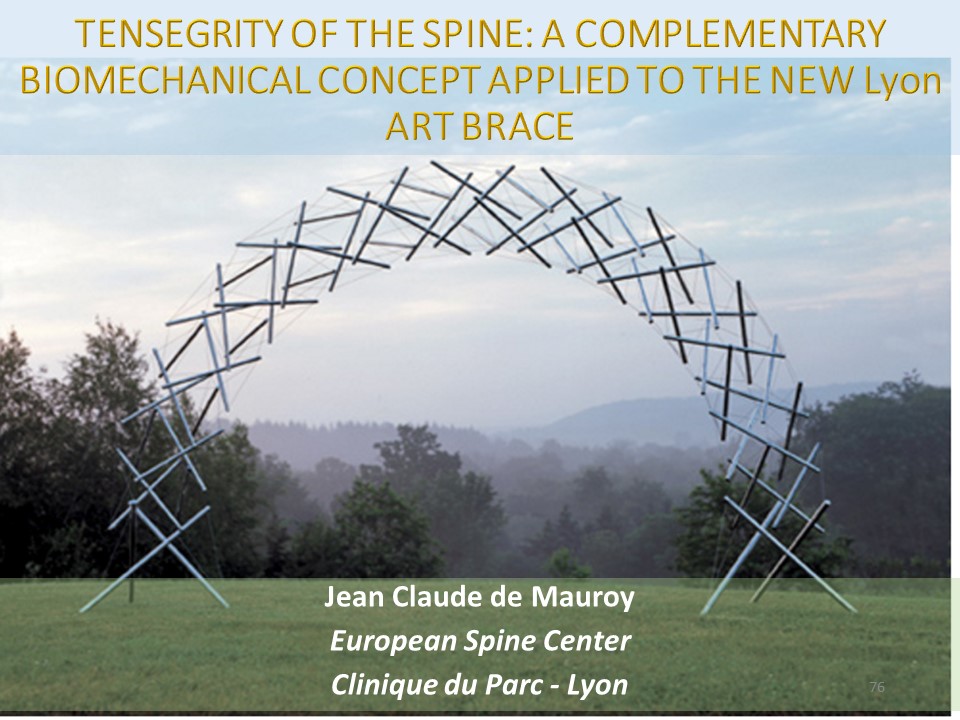 |
The readjustment of paravertebral tensions with creep in a hypercorrective plaster cast is one of the characteristics of the Lyon Method. The physiological basis of this treatment is Tensegrity. |
 |
|
 |
It was over a hundred years ago that an architect Buckminster Fuller published "ideas and integrity" and created the neologism of tensegrity for tensional integrity. This comprehensive concept from the Latin "integritas" complements classical anatomy and biomechanics. It’s an almost universal concept. |
 |
Dr Ida Pauline Rolf was a friend of Bückminster Füller. Rolf completed a doctorate in biochemistry at Columbia University and was the first woman to hold a research post at the Rockefeller Foundation from 1917 to 1927, where she coauthored over a dozen research articles on the chemistry of lipids. Following her tenure there, Rolf studied mathematics, physics and homeopathy for 2 years in Switzerland, Germany, and France. |
 |
Rolf understood early on, that human biomechanics confer broad health benefits and that joint motility improves the flow of fluids through the body, thus promoting "natural healing". Structural integration highlights the concept that the myofascial network of shape is a key determinant of bone alignment, posture, and movement. Locally induced strains alter the overall geometry of the larger structure. For Rolf, the adequacy of the individual's adaptation to gravity is a key determinant of physical and psychological health. The balance or imbalance in tone of fascial structures is a potent determinant of bony alignment and joint function. |
 |
Studies done at the Schroth Institute for Scoliosis in Germany have shown that scoliosis patients all have abnormal movement patterns that are one of the scoliosis causes. If these aberrant movement pattern stay in place long enough they begin to adversely affect the person’s posture. Postural changes that stay uncorrected will eventually cause structural changes in the body. |
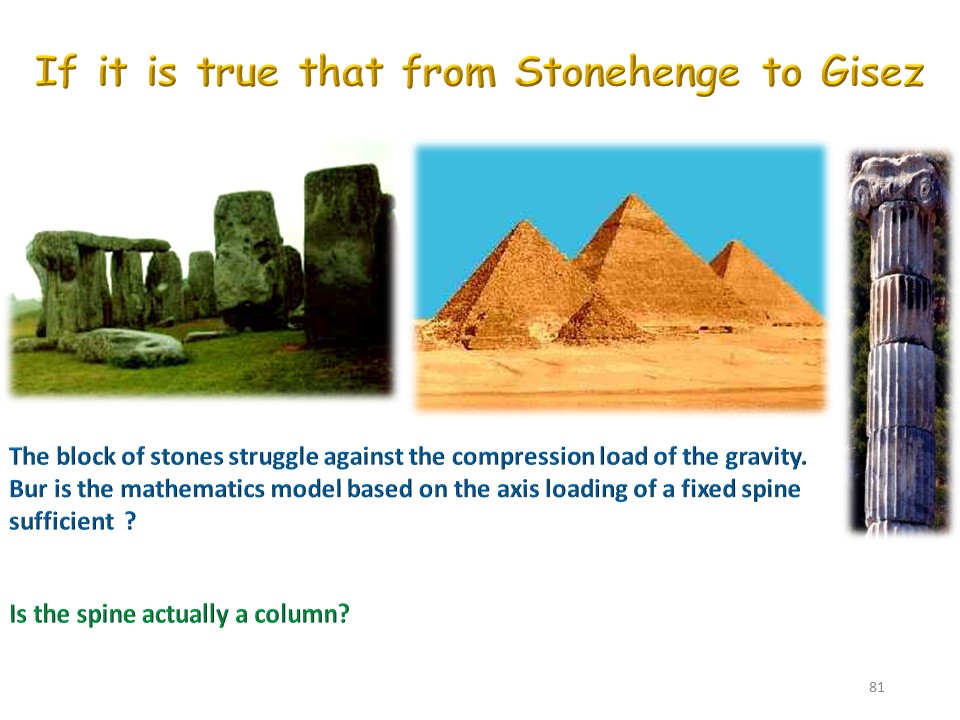 |
|
 |
|
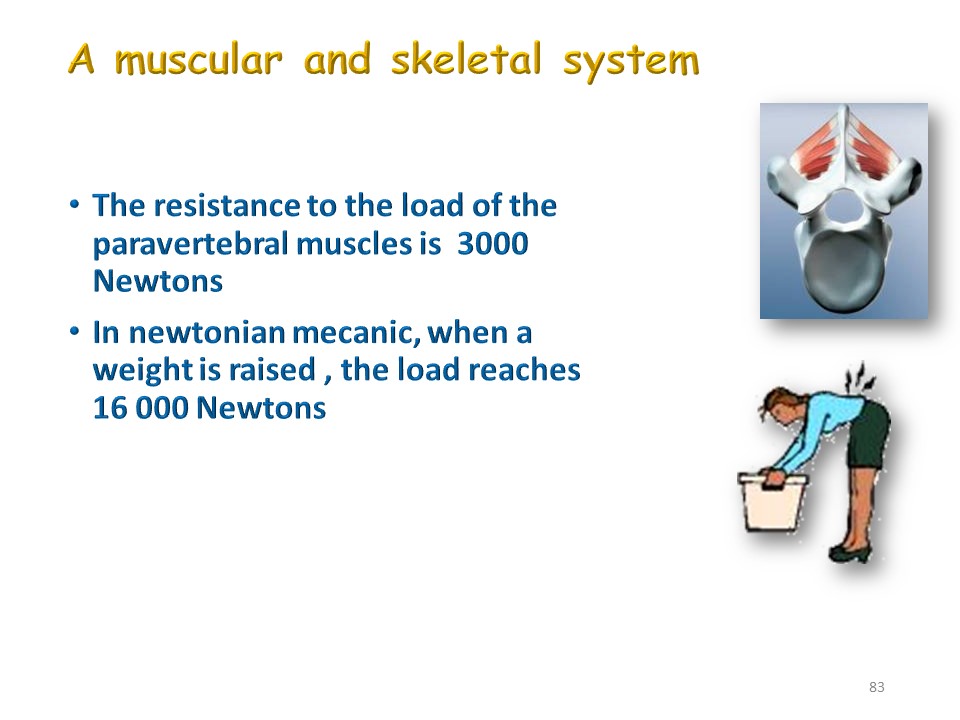 |
|
 |
|
 |
Homo sapiens is the only one with 25 cm pubertal growth in the spine. This is when the tensegrity is maximal which will last up to about 35 years. This is the great period of high level sport activity. Thereafter, the intervertebral discs pack, the ligaments relax, and we gradually lose tensegrity. |
  |
The growth is mainly happening aound the back. It is hold back by the ligaments except in Marfan’s syndrom and this explains the important height. Taking a look at those patients we note a disappearance of the lumbar lordosis, which is, therrefore, linked to the ligaments tension. |
 |
Comment in the certification part of the website
|
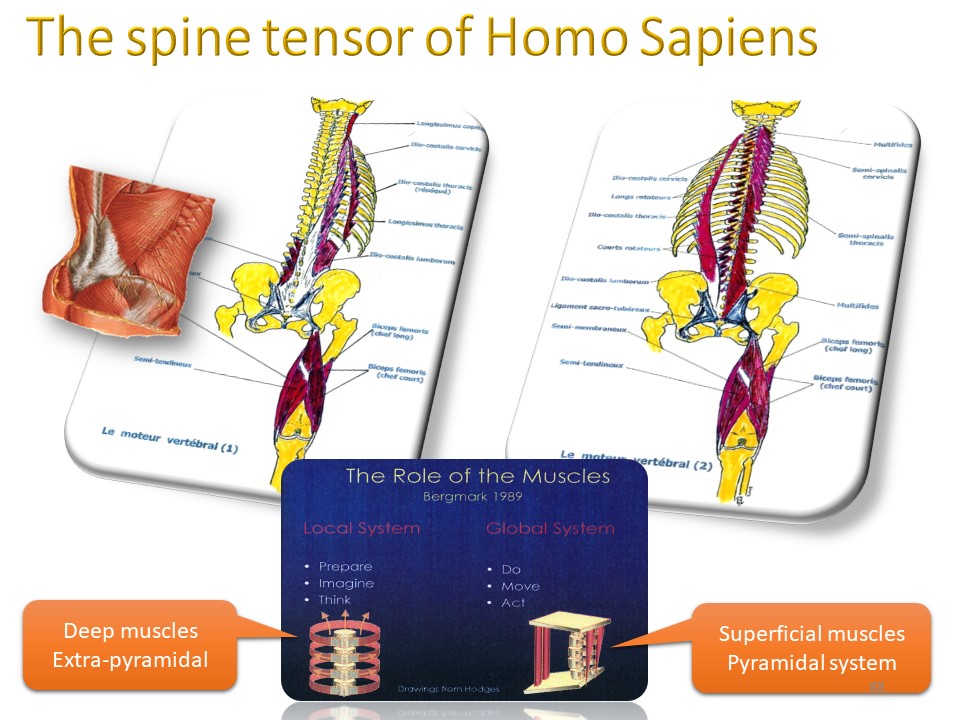 |
The vertebral tensor of homo sapiens has several layers of muscles, from small deep short muscles to large superficial muscles. Two functional systems coexist: the rather deep extrapyramidal automatic system and the more superficial voluntary pyramidal system. |
 |
|
 |
|
 |
The spine can work in every position. |
 |
The spine can work in all positions of space. The energy consumed is minimal. |
 |
|
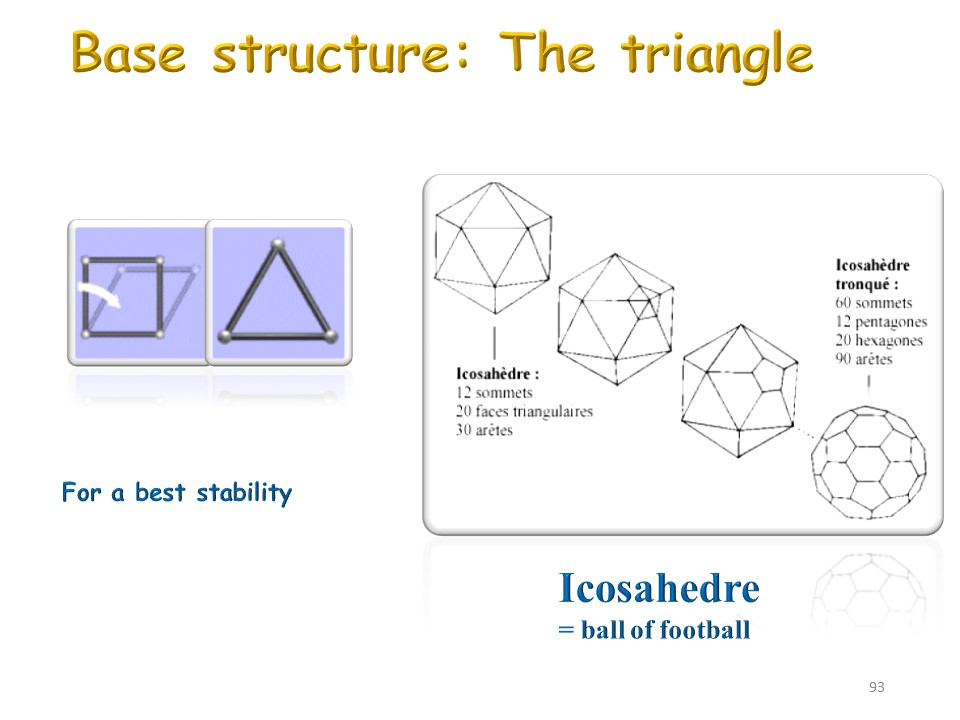 |
The basic structure of a tensegrity system is not the square or the cube, but the triangle and the icosahedron. |
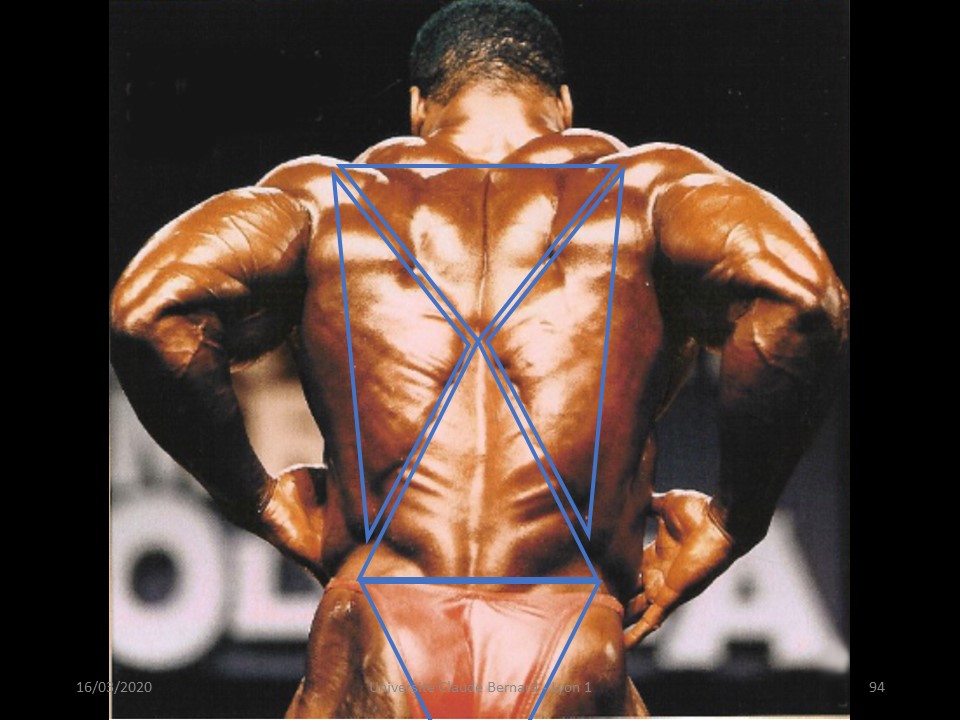 |
The entire muscular architecture, here clearly visible, is of triangular type. The apex of the kyphosis constitutes the peak of an icosahedron characteristic of a tensegrity structure. |
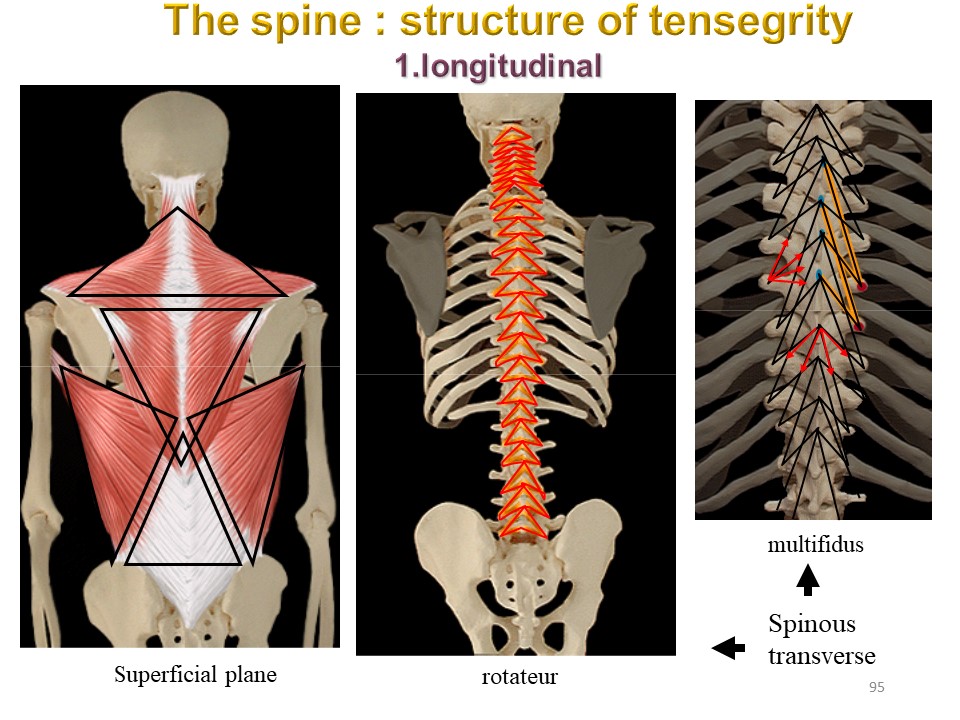 |
The basis structure is the triangle which offers a best stability, but the muscle structure paravertebral as deep as superficial has a triangular structure. The posterior arch has a triangular structure with transverse apophysis and median spinous apophysis. |
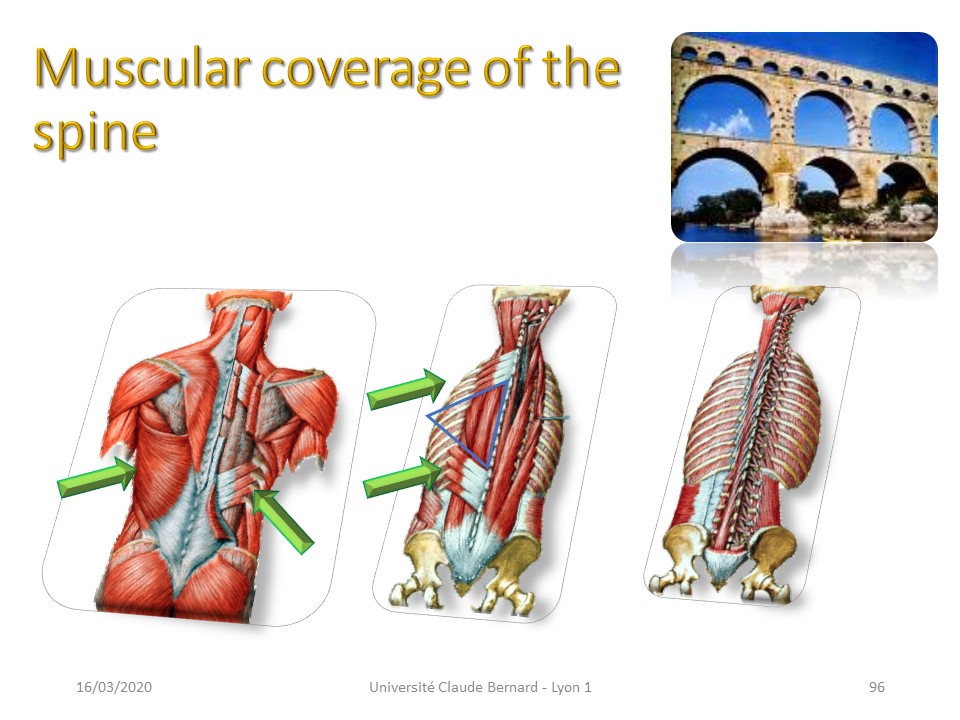 |
The spine muscular cover has a layered architecture. The superficial layer and the middle layer have large arches, the deep layer is inserted on each vertebral segment. The spiral chains at the end of the green arrows are crossing at the thoraco-lumbar and cervico-thoracic level. They will couple the horizontal plane to the functional sagittal plane and ensure the dissociation of the pelvic and scapular girdles. |
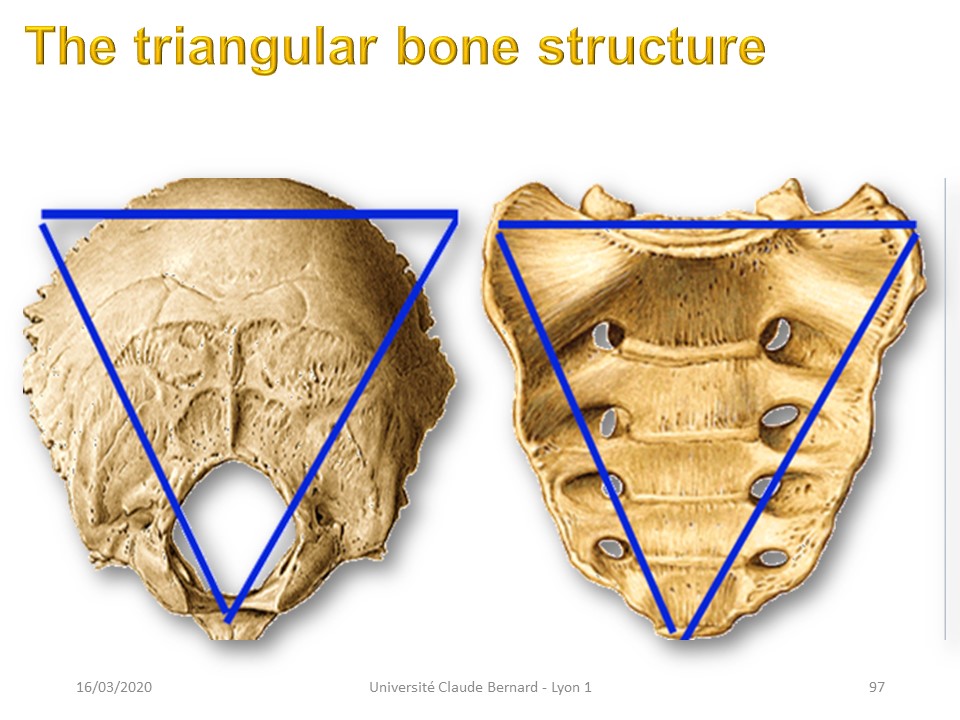 |
The point of insertion of the muscle chains at the ends of the spine is triangular, ensuring the stability of the head at its upper end and the relay with the lower limbs at the level of the sacrum. It is this stability that ensures us a functional bipedalism. |
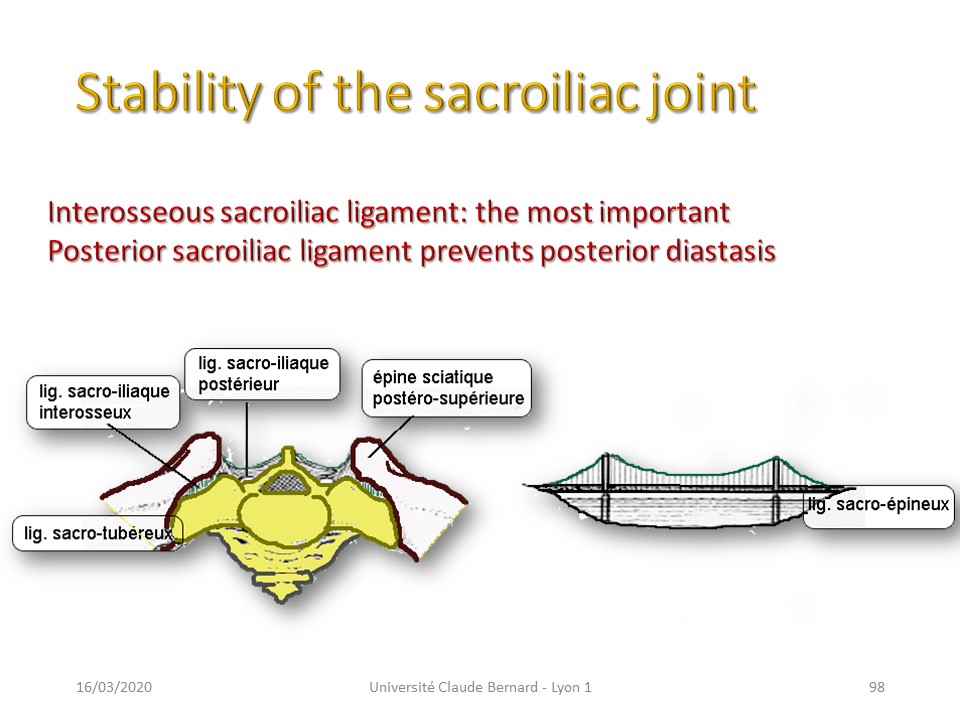 |
The sacrospinous ligament system ensuring the stability of the sacroiliac has a tensegrity structure like a bridge. |
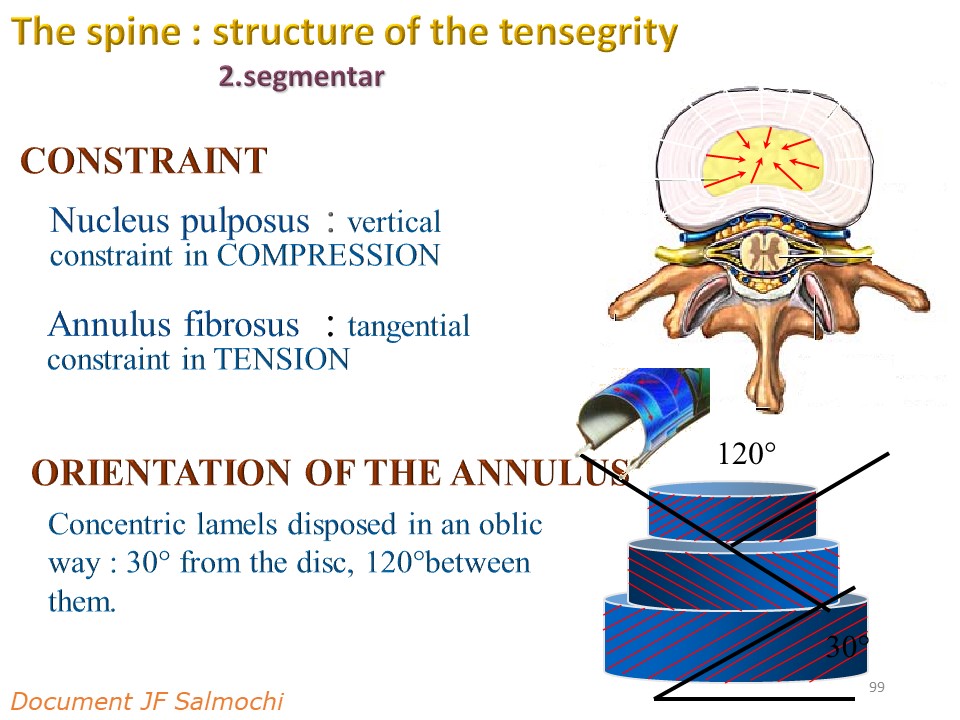 |
The intervertebral disc is also a structure of the tensegrity with the nucleus in compression and the annulus in tension. The orientation of the fibres of the annulus in reversed layer and 30° inclined from the horizontal is a characteristic of the tensegrity/ |
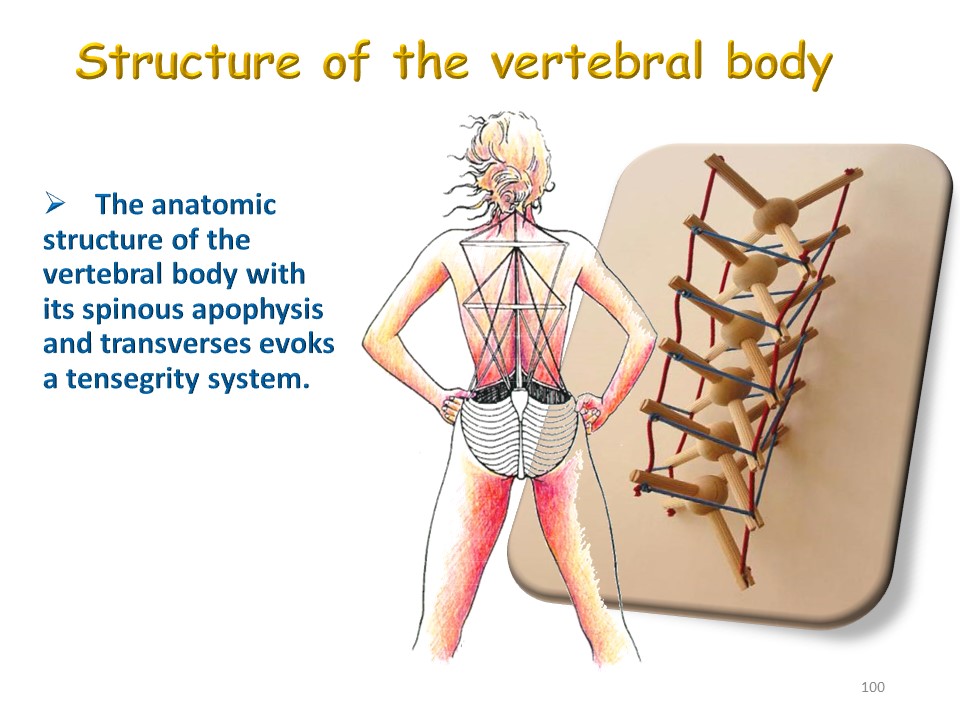 |
|
 |
The stresses are no longer absorbed on the entire spine, and it is the areas above and underlying the arthrodesis that will be over-solicited. It's like trying to go fishing with a stiff rod. This is the major reason why scoliosis surgery should be avoided whenever possible. |
 |
|
 |
A geodesic dome built on the principle of tensegrity could cover an entire city. |
 |
A strange coincidence in Washington. Across the mall from the Museum of Natural History is the Hirshhorn Museum of Modern Art. You can see that the neck of the dinosaur is 10 meters long, and it was functioning in every position. How could the muscles and articular cartilage of the cervical spine of a dinosaur withstand the huge forces that would be generated in standard Newtonian mechanics? There is no way that the soft tissues of a diplodocus, with a ten-meter long neck and 16 freely moving cervical vertebrae could withstand the forces generated, if the neck functioned the same as a lever. One of the answers is in the outside rotunda where stands Kenneth Snelson’s sculptures. The sculptures of tensegrity type get closer the neck of the dinosaur. |
 |
|
 |
The simplest is the geometric non-linearity, that is to say that a small change in the length of a few mm results in a very significant change in the strength and resistance of the system. A poorly healed sprain will cause chronic joint instability. |
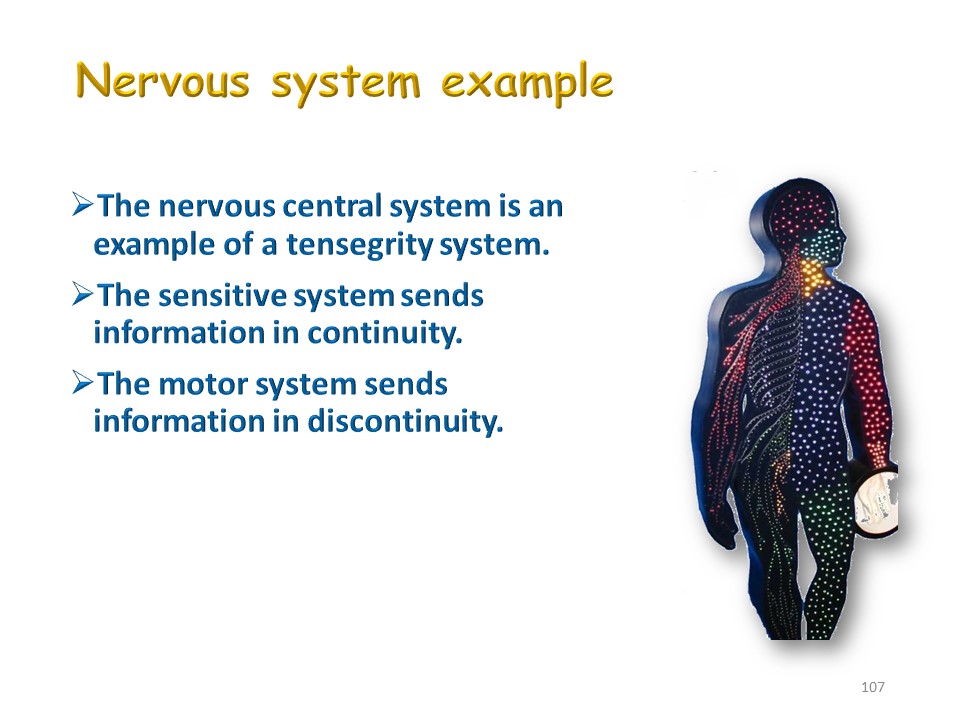 |
|
 |
|
 |
|
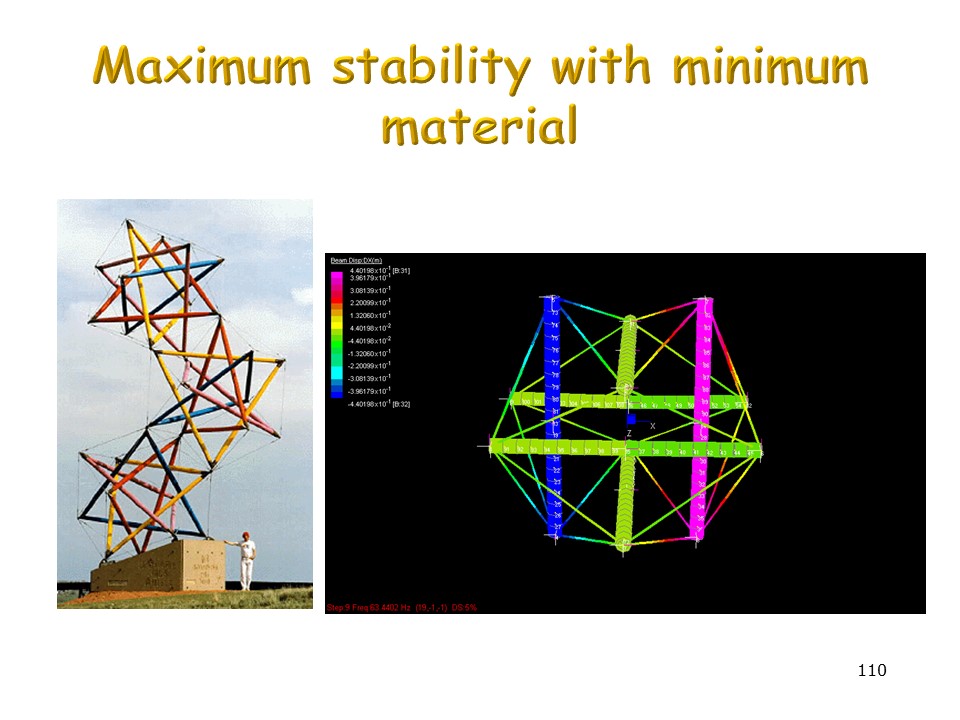 |
|
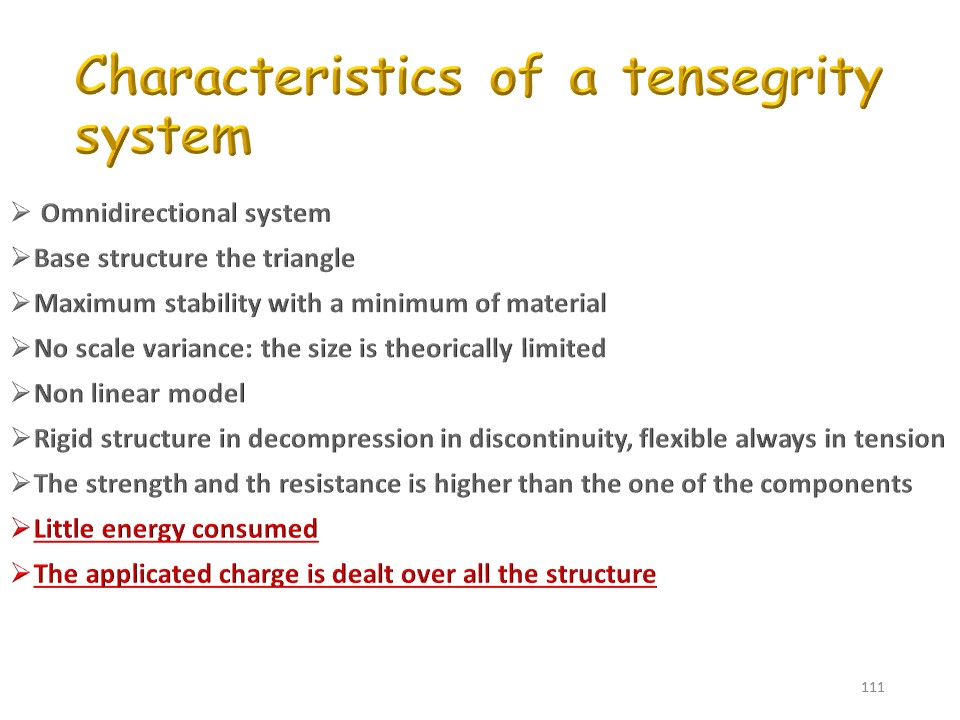 |
|
 |
There is not a lot of energy consumed and all the applicated charge is dealt over the structure, just as for the bicycle wheel. Some lumbago can be explained by a loss of the tension of the ligaments after a quick discal stretching, as a ray of a wheel which is not straightened enough can break the wheel |
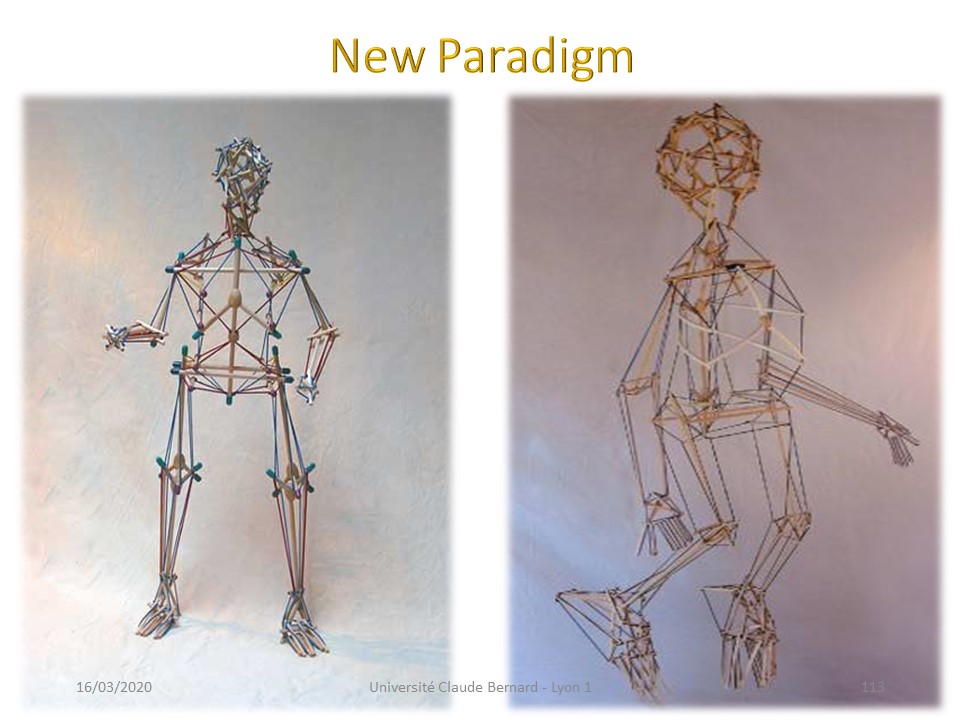 |
It is the whole organism from the cell to the fascia passing through the skin which constitutes a structure of tensional integrity. The 206 bones work in discontinuous compression, they are hoisted against gravity by the continuous tension of fasciae and ligaments. |
 |
The fascias can be compared to the tent fabric. They are extremely resistant. In front of the vertebral body, the anterior vertebral common ligament plays a fundamental role in the sagittal plane. |
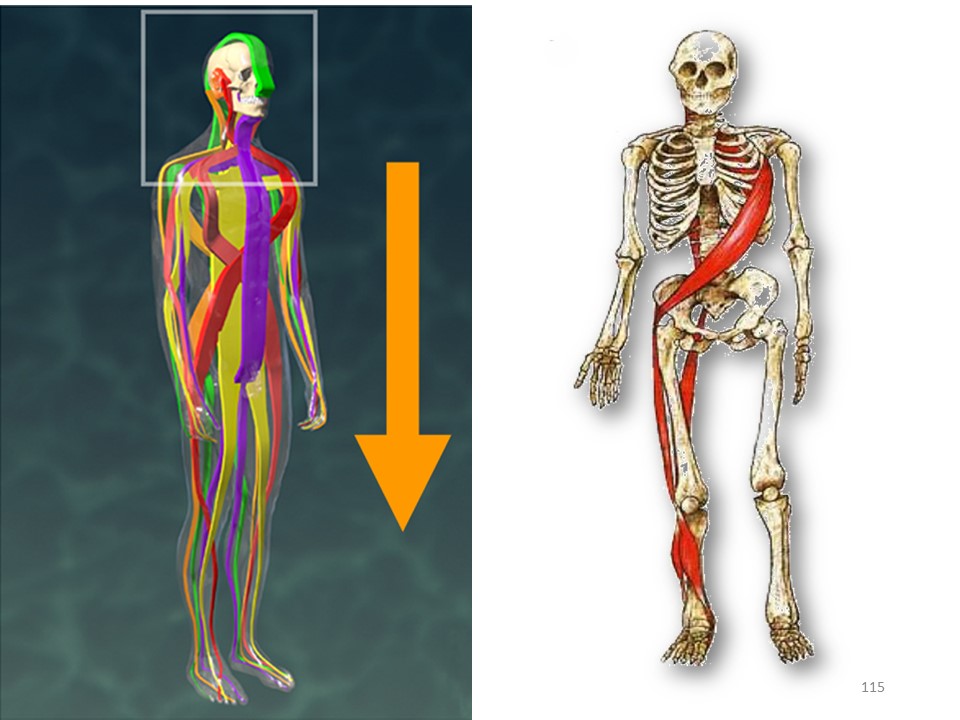 |
Anterior spiral chain in red. |
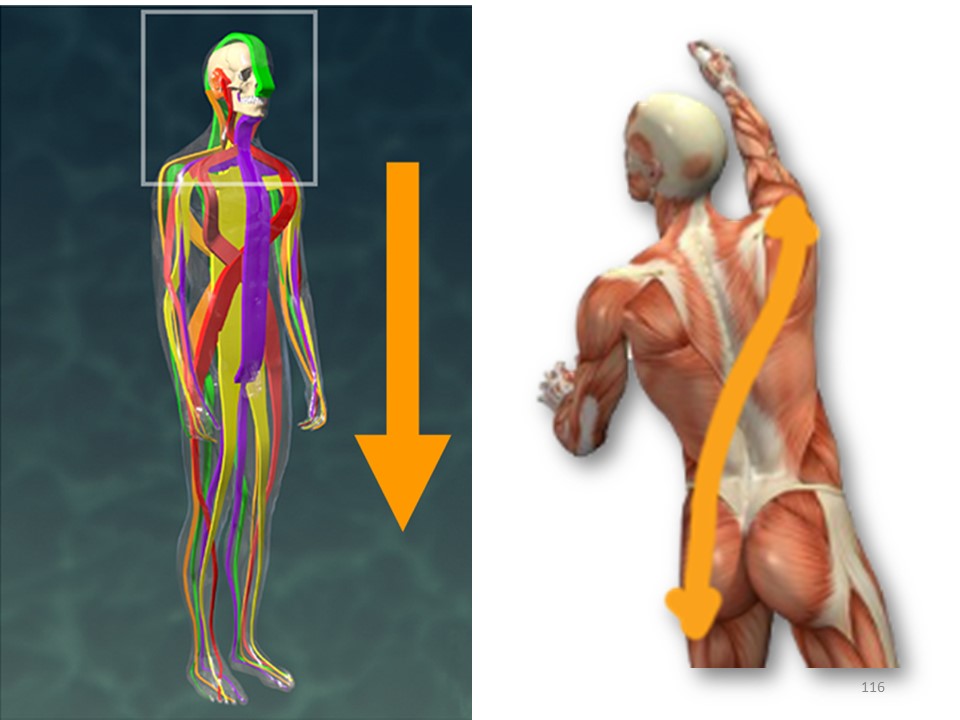 |
Posterior spiral chain in orange. |
 |
The fascias and muscles are organized into chains from the skull to the feet. The spine is the fundamental axis. Depending on the movement, the chains will be requested in the different planes of the space. The pyramidal system works on a muscle pre-tension managed by the extrapyramidal system. |
 |
|
 |
The principle is universal. When the center of the carbon is organiser in an icosaedric structure. The graphite turns into a diamond. |
 |
This tensegrity structure is that of many microorganisms and viruses. |
 |
|
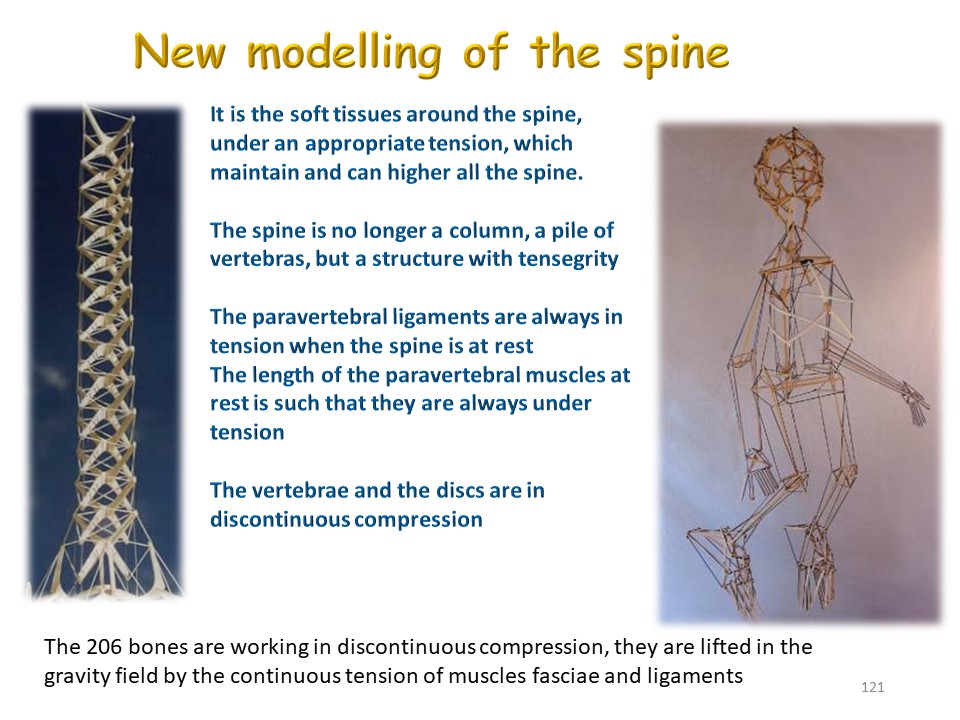 |
|
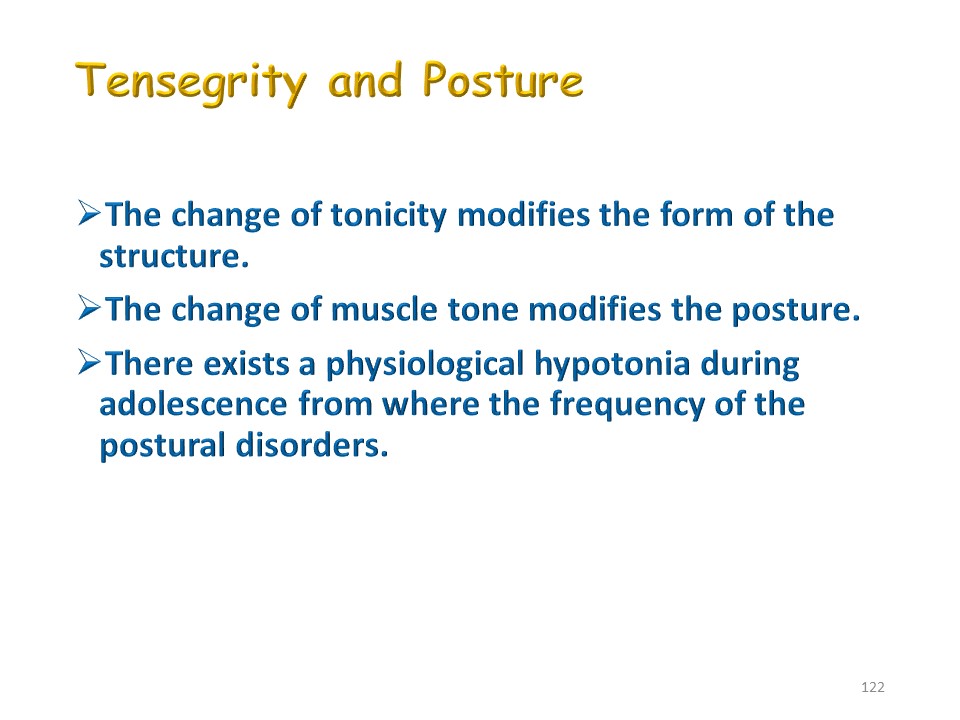 |
|
 |
In the domain of the treatment of scoliosis, we have always foreseen the importance of paravertebral tension using some plastered braces at the beginning of the treatment. Only a traction in continuity during more than 3 weeks can modify the ligaments length realising a real flow. |
 |
To restore Tensegrity in spine deviations, the length of the ligaments must be changed. This is why the characteristic of Lyon conservative treatment is the creep, that is to say the plastic deformation or change of length of the viscoelastic paravertebral structures (geometric non-linearity). The creep requires a continuous tension of 1 to 4 months, ie a “total time” of cast or brace. |
 |
|
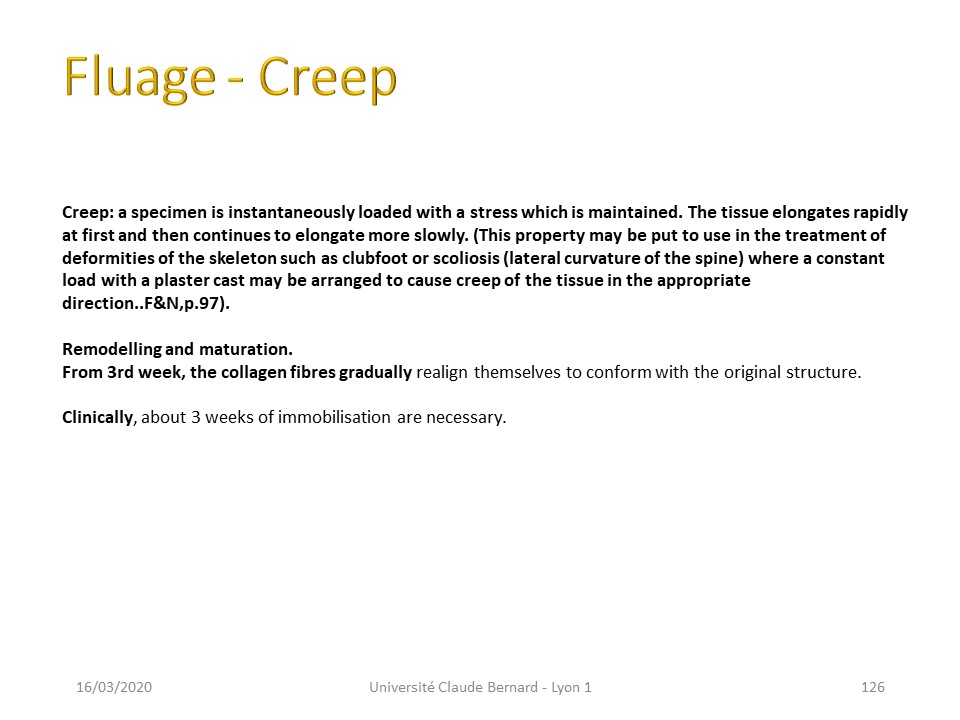  |
|
 |
Only the plastic deformation obtained by the plaster cast or a hypercorrective brace, worn in "total time", can restore a favorable tensegrity. |
 |
The brace in plexidur rigid enables a discontinuous compression of the rib cage and is more useful than an elastic valv with a continuous pression. |
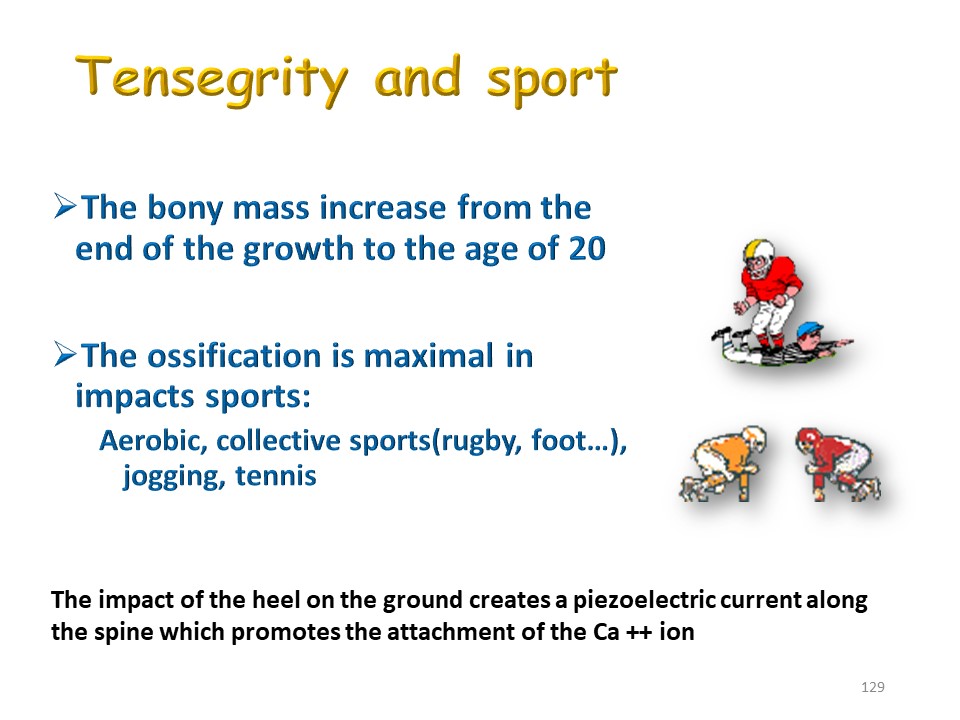 |
Many studies reached the conclusion that to prevent osteroroposis the sports with impacts were really interesting. The foot contact is also advised to consolidate the callus on the bone. This is why at the end of the satural growth, when the orgasm is going to increase the bony mass until the age of 20 we advise sport with impacts. Dancing is more advised than swimming. |
 |
Many muscles act as tensors and increase the resistance of the lot. The yellow ligament called this way because of its main component: elastin, is the elastic of the spine. A bad healing can explain an instability after surgery. |
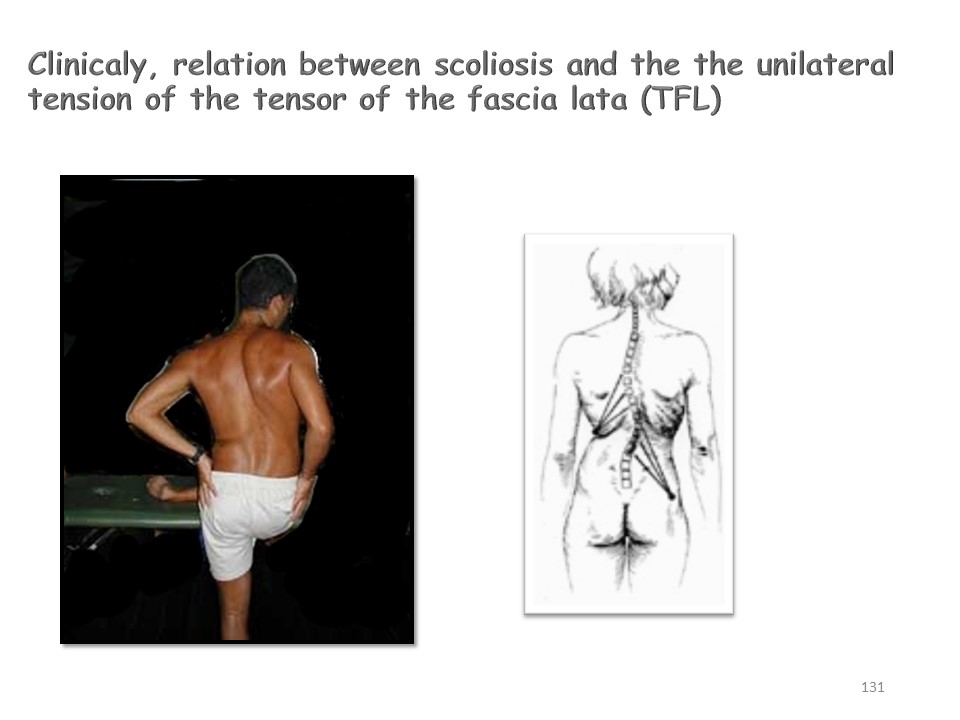 |
A bad asymmetrical seating position when the hip is in tension can lead to a scoliosis. |
 |
|
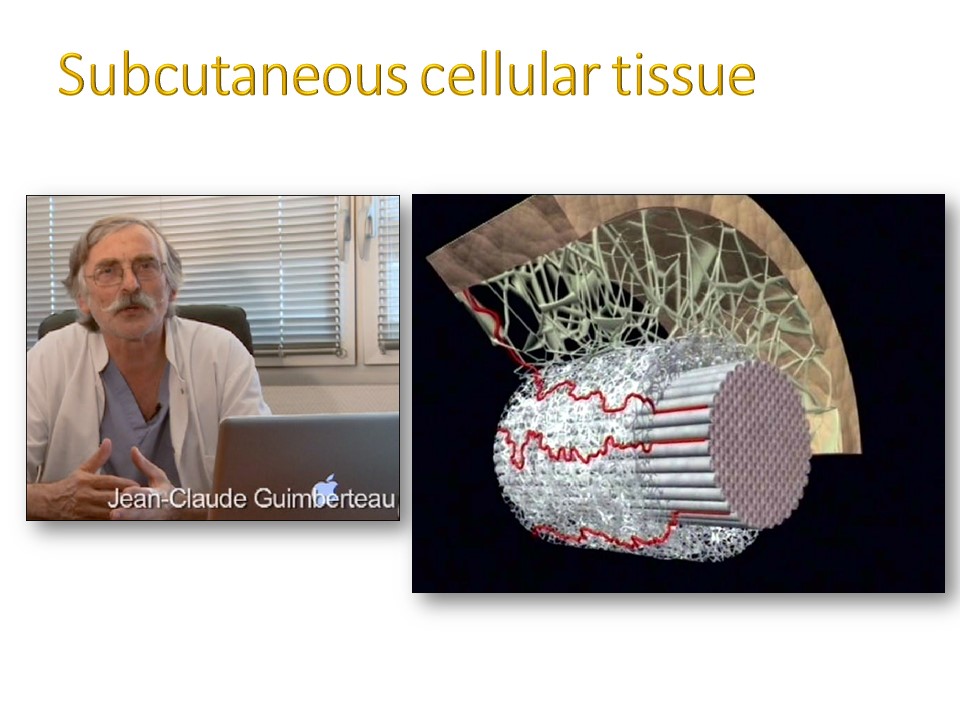 |
The subcutaneous connective tissue is a system of tensegrity that is clearly visible during a surgical approach with the scalpel. |
 |
Videos SSOL (Scoliosis Online Learning Spine) : https://ssol1.vhx.tv/videos/jean-claude-02-tensegrity-scoliosis |
 |
Plagiocephaly is one of the characteristics of scoliosis in the newborn, reflecting the asymmetry of tension in the skull. |
 |
This plagiocephaly is usually resolved by positioning the head in the opposite direction to the deformation. |
 |
Surgery unfortunately leads to a permanent loss of tensegrity in the operated segment. |
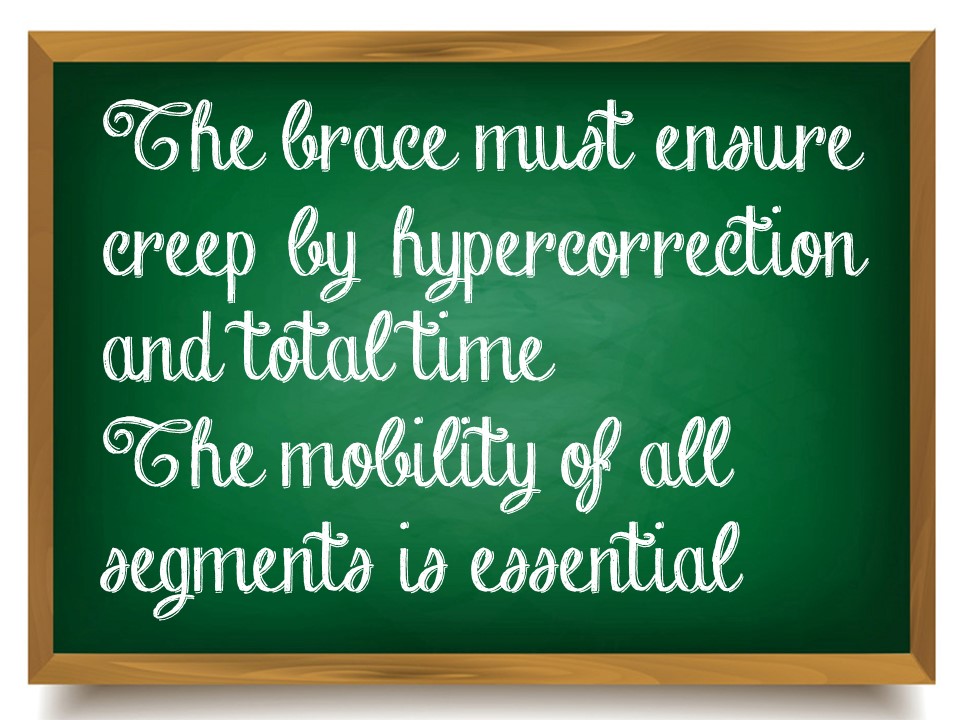 |
|
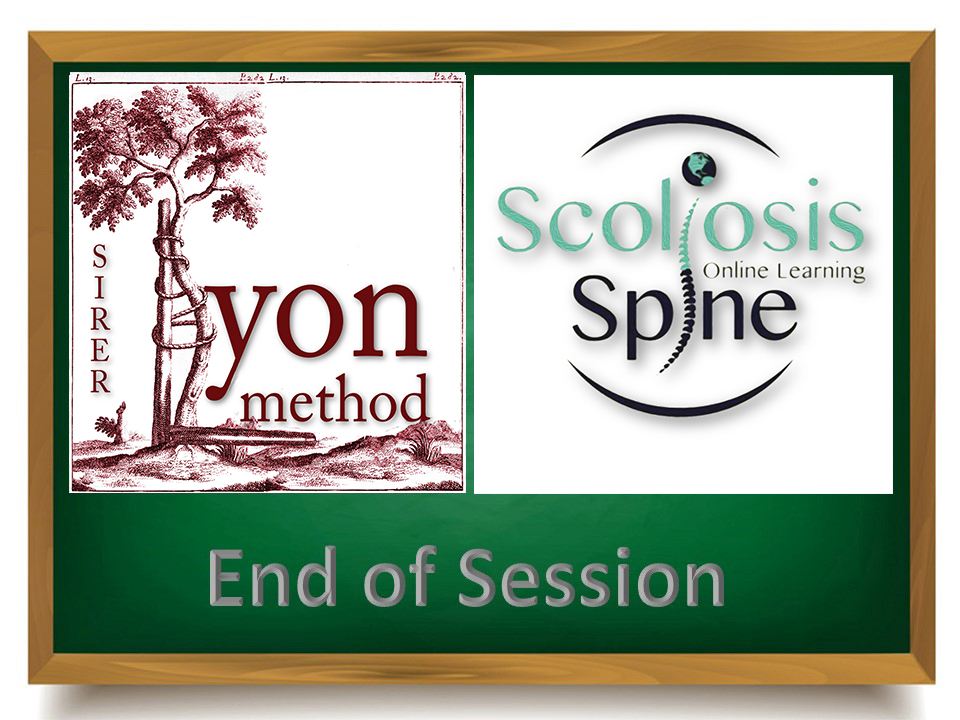 |